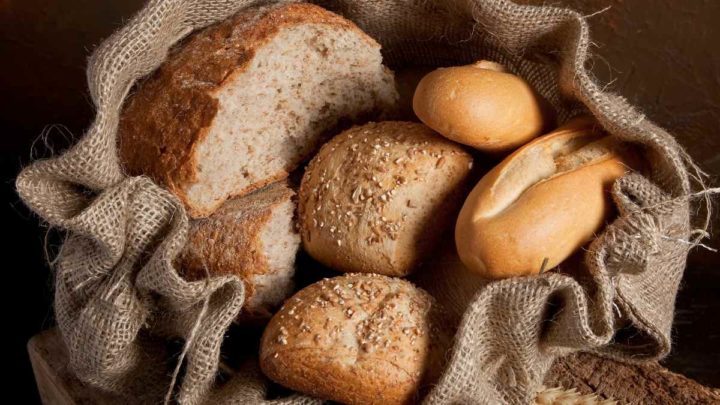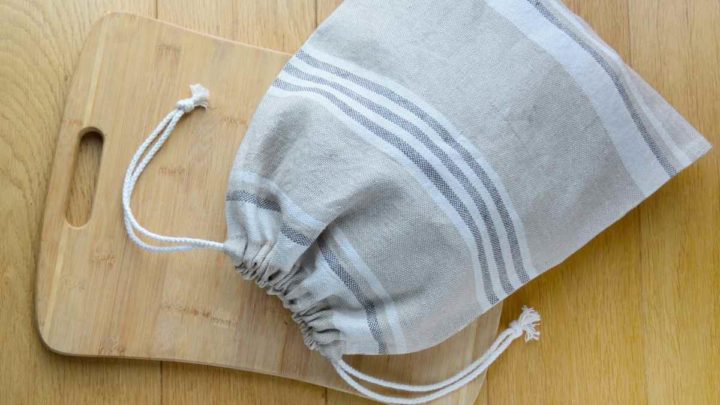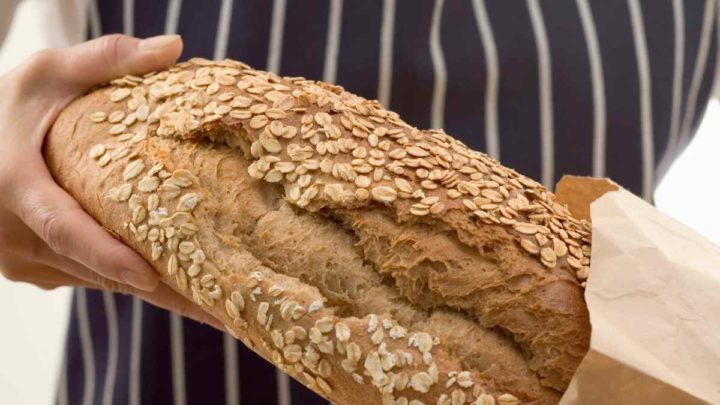Sustainable clothing is already a hot topic, considering that millions of people are already fighting for the environment. We have all seen those plastic bags used to carry our loaves of fresh-baked goods and food supplies at home from the bakery, and we know they are not good for us or the environment. Plastic bags produce massive kitchen waste, which is one of the worst pollutants. But which one is better? Linen or cotton bread bag? Here is how it breaks down.
All About Linen vs. Cotton Bread Bag
What is linen made of?
Linen is made of flax fibers that have been processed into yarns and woven together to make fabric. The process involves spinning the raw material into thread, weaving the threads into cloth, dyeing the cloth with natural dyes, finishing the product by washing it, drying it, and then sewing it up. This can be done on an industrial scale but often happens in small workshops where artisans hand sew their products using traditional methods.
Linen helps the environment because it requires less water than other fabrics like cotton. It also uses fewer chemicals during production as well as is more durable than many synthetic materials. In addition, linen has a longer shelf life than some synthetics, so you do not need to replace your linens every year.
Many individuals use linen bread bags for proper food storage because it does not absorb excess moisture and keep their shape while keeping out bugs and dust mites. Hence, it is good storage to keep the loaf of bread fresh and its original texture. However, there are disadvantages to this type of bag too. For example, if you use them frequently, they will get dirty easily and require frequent cleaning. Also, since they are usually sewn shut, they cannot hold much weight. If you want something that holds lots of weight, look elsewhere.
The advantages of using cotton bread bags include:
1. They are reusable. You wash them after each use and hang them back up again.
2. They are easy to clean. Simply put in the washer when needed.
3. They last long. These tend to retain their shape even though they may become slightly wrinkled over time.
4. They come in different sizes. So you can choose what size fits best for your needs.
5. They are affordable.
Disadvantages of using linen bread bags:
1. They take a lot of space. Since these bags are meant to store large items such as loaves of bread, they might not fit in your cupboards.
2. They do not stay put very well. Because they are loose-fitting, they move around quite a bit.

How to wash linen bread bags?
Washing linen bread bags is easy. Here are the steps to follow:
1. You just put them in cold water and let them soak until clean.
2. Then rinse thoroughly under running water before hanging dry.
3. Do not wring them out! They should hang flat without any wrinkles.
If you live somewhere humid, you may find that your linen bread bags start getting moldy after a few months. To prevent this, store them away from direct sunlight.
What kind of bread should be stored in a linen bread bag?
Bread is one thing that lasts forever. That is why we recommend storing it properly. Linen bread bags work great for storing whole grain bread, crusty bread, or rolls. But if you prefer white bread, you may consider buying plastic bread bags instead.
What is a cotton bread bag made of?
Cotton bread bag is made of 100% pure organic cotton material. Unlike linen bags, cotton is grown naturally and therefore does not harm the soil, and it has lightweight material. As such, it is considered sustainable. Like linen, cotton is spun into thread, dyed, washed, dried, and finished off. After being cut into pieces, these are stitched together to form a bag.
The advantages of using cotton bread bags include:
1. Durability
2. Affordability
3. Eco-friendliness
4. Ease of care.

These factors make it ideal for storing foods like homemade bread and other pastries. However, there are disadvantages associated with using these reusable bread bags:
1. They tend to shrink when wet.
2. They become stiffer over time.
3. They are prone to mildew.
4. They are expensive compared to linen bread bags.
5. They take longer to dry.
How to wash cotton bread bag?
To properly wash your cotton bread bag, here is what you must know:
- Wash them separately or together, depending on how dirty they are.
- Use lukewarm water only because cold water could damage the color of the fabric.
- Rinse them thoroughly before putting them in the washer.
- Make sure to spin them inside out. Doing otherwise might cause the weave to come undone.
- Dry them completely before folding them neatly.
What kind of bread should be stored in a cotton bread bag?
You can place either frozen or fresh loaf in your cotton bread bag. If you want to freeze your bread, wrap each loaf individually with wax paper or plastic wrap first, then place all wrapped bread in an airtight container. Once frozen, transfer them directly to your freezer. When ready to eat, thaw them overnight in the refrigerator.
Linen vs. Cotton Bread Bag: Which One Keeps Bread Longer
When choosing between linen and cotton bread bags, one thing to consider is which keeps bread fresher longer. Linen bread bags and linen tea towels have been around for centuries but were mostly used by farmers who needed to preserve their crops. Today, people still prefer linen bread bags because they can be reused again and again. This means that you save money and help protect our planet at the same time. On top of all that, linen fabric lasts longer than most types of plastic bread bags. Meanwhile, cotton bread bags last about two years. So, if you need to buy more than one set of linens, go ahead. But if you are looking for an eco-friendly option, then opt for cotton instead.
How does linen keep the bread fresh?
Because linen has natural antibacterial properties, it helps maintain the quality of stored goods like loaves of bread. It also prevents bacteria growth and makes the bread stay fresher longer. In addition, it absorbs less moisture, so it does not spoil as quickly. The best part is that linen is breathable. Therefore, it allows air circulation and keeps the bread cool. You can use linen fabric over your bread boxes too!
How does a cotton bread bag keep the bread fresh?
Unlike linen, cotton does not absorb any excess moisture from the food. Instead, it traps heat within its fibers, making it warm and cozy. Because of this, it preserves the taste of the loaf of bread better. Also, unlike linen, cotton is highly durable. Thus, it will remain strong even after many uses. If you want to store bread for long periods of time without spoiling, choose cotton bread bags.

How To Properly Keep Bread Fresh For Long
We all love to eat fresh bread regardless if bought from a local bakery or baked at home. Thus, keeping it fresh for a couple of days is quite challenging. Here are some tips on how to do just that:
- Keep it away from direct sunlight. Exposure to light causes bread to lose nutrients faster.
- Store it in a well-ventilated area.
- Place in an airtight container and freeze, especially if you have artisan bread with a hard crust or homemade loaves. Crusty bread tends to have a chewy texture once it accumulates excess air.
- If possible, wrap it tightly in plastic wrap. The plastic wrap protects against humidity while allowing oxygen to circulate through the crusty loaf.
- Do not refrigerate bread unless necessary. Refrigeration damages the crust and reduces the shelf life of bread.
- Bread should always be kept moist on a wooden bread box.
- Fresh loaf dries up when exposed to dry conditions. Store it in a paper towel-lined basket or bowl on your kitchen counter.
- Wrap in wax paper to prevent from having moldy bread.
- French toasts or bread pudding should be refrigerated.
- Store soft sandwich bread on a plastic container.
- Real bread (homemade bread) should be stored on the kitchen counter, wrapped with a dry linen towel or cotton towel.
Frequently Asked Questions
Does bread stay fresh in linen bags?
Yes, crusty bread stays fresh in linen bags. However, we recommend using them only once since they cannot be washed daily. They may get dirty easily.
What is the difference between linen and cotton bread bag?
The main differences between these two products include durability and cost. Linen bread bags are made out of 100% pure linen fabrics. These materials are very soft and comfortable. As such, they make great kitchen accessories.
Do cotton bags keep bread fresh?
Cotton bread bags are usually cheaper than linen ones. However, they do not hold much water inside. Hence, they will not retain enough moisture to prevent moldy bread. Moreover, they trap warmth and cause bread to become stale quicker.
What is the best way to store homemade bread?
Homemade bread needs to be stored properly to ensure maximum freshness. This includes storing it in a clean place where there is no dust accumulation. Furthermore, it must be wrapped in aluminum foil before freezing. Finally, it should be placed in a freezer bag.
Linen vs. Cotton Bread Bag: Which Type Of Bags Are Best For Food Storage?
When choosing which type of bread bag to buy, consider what kind of bread you plan to bake. Do you prefer white loaves of bread or whole wheat bread? Are you looking for something sturdy or lightweight? What about the price? So whether you choose a linen or cotton bread bag, your own preference will still matter most. One thing is for sure; each has its own advantages and disadvantages for storing fresh bread on your kitchen counter.